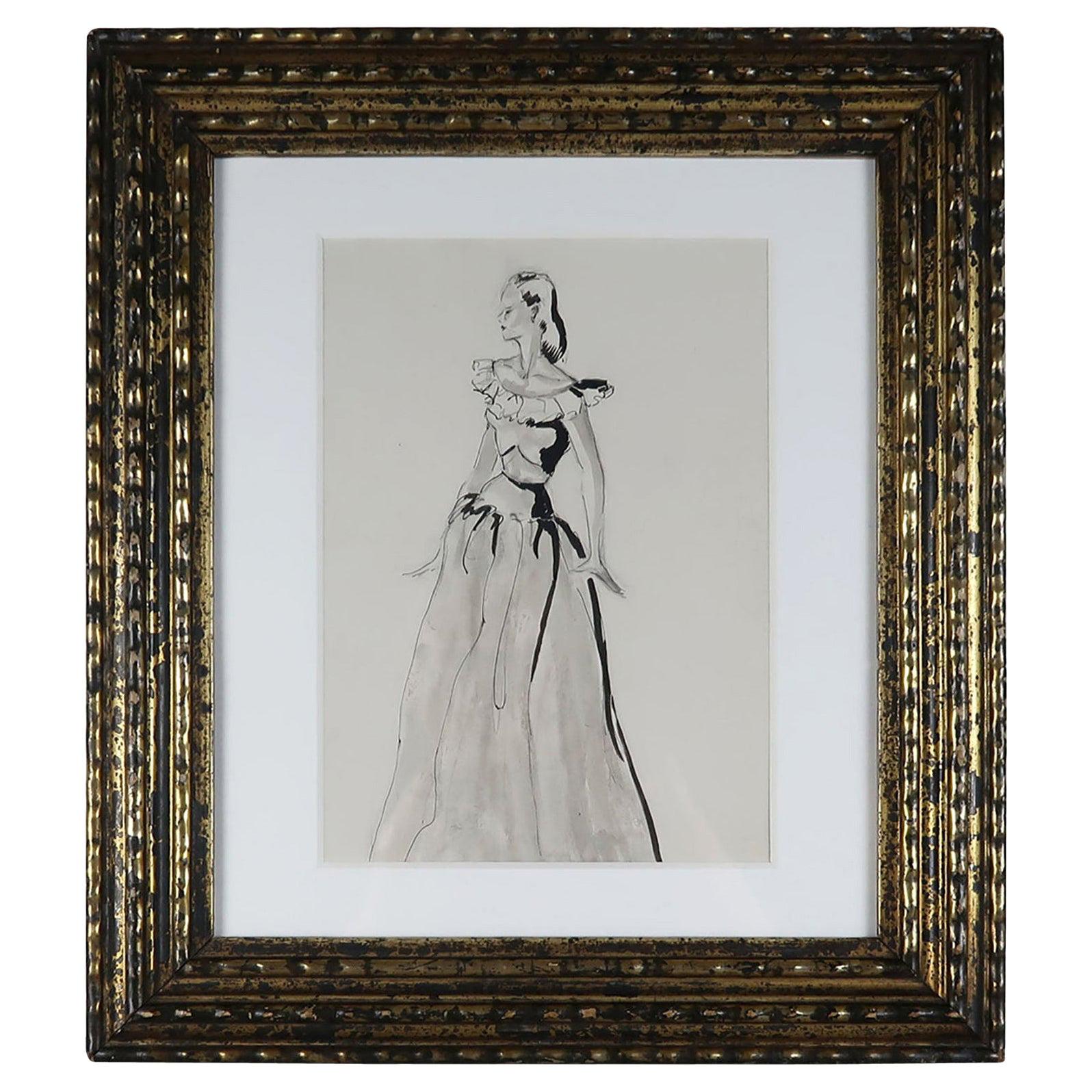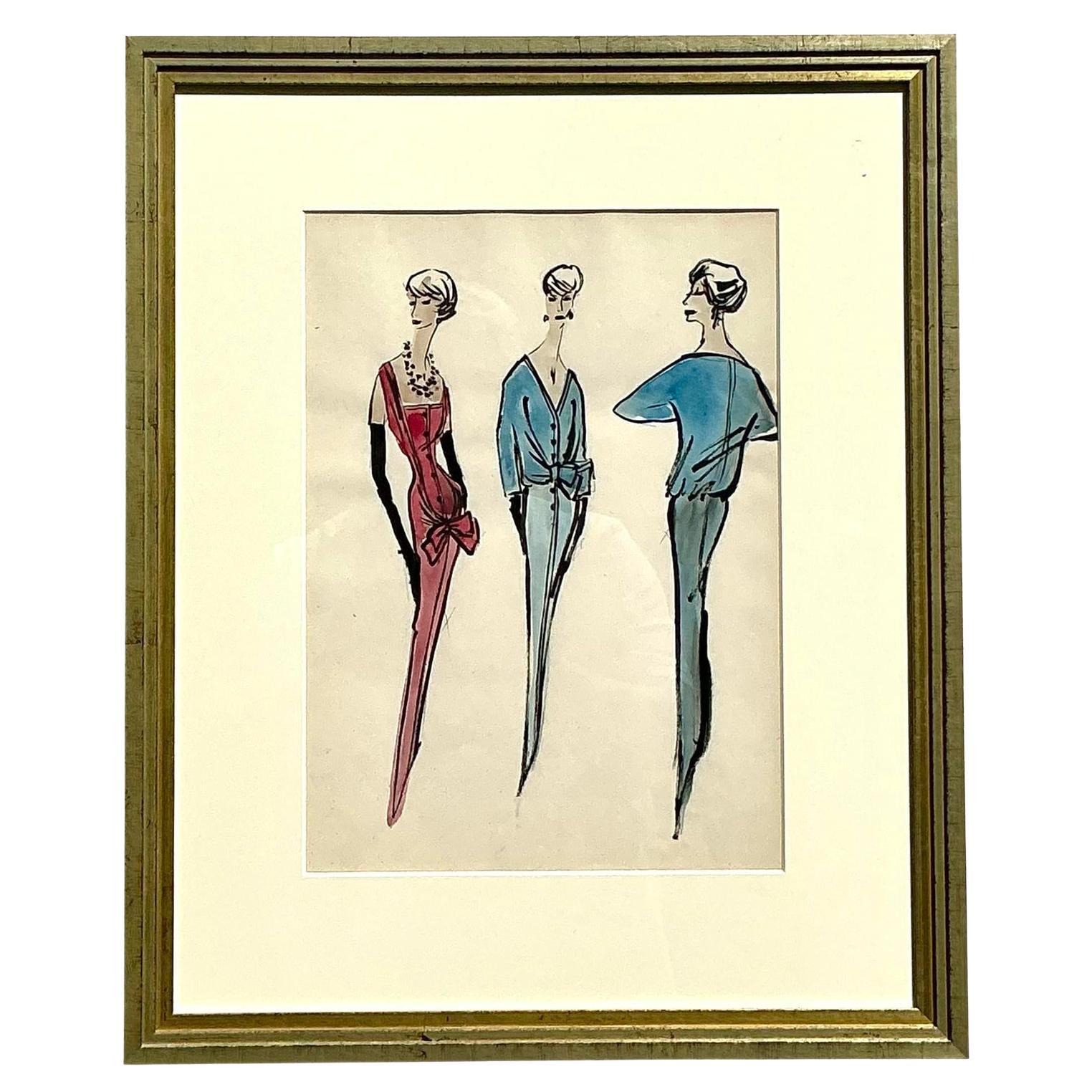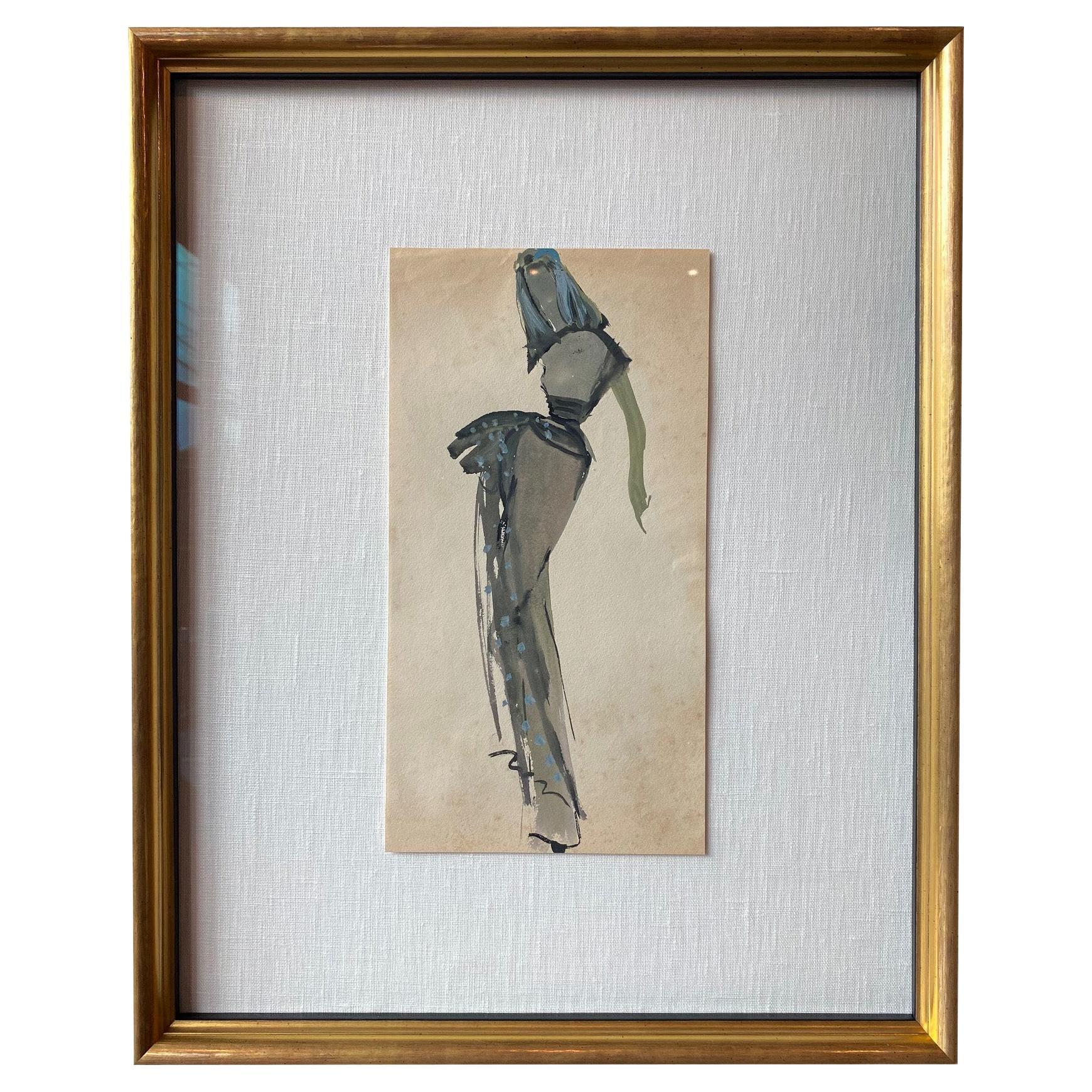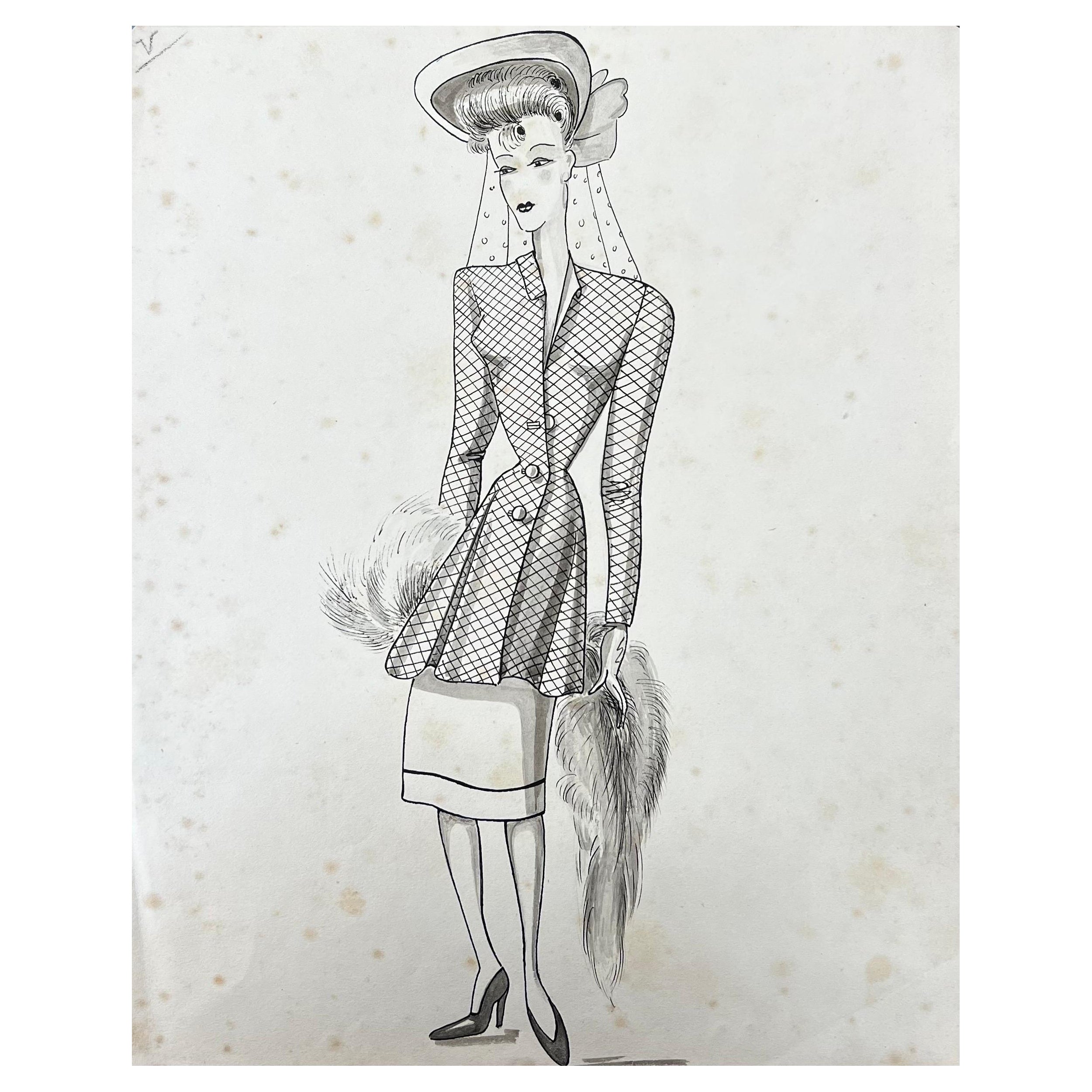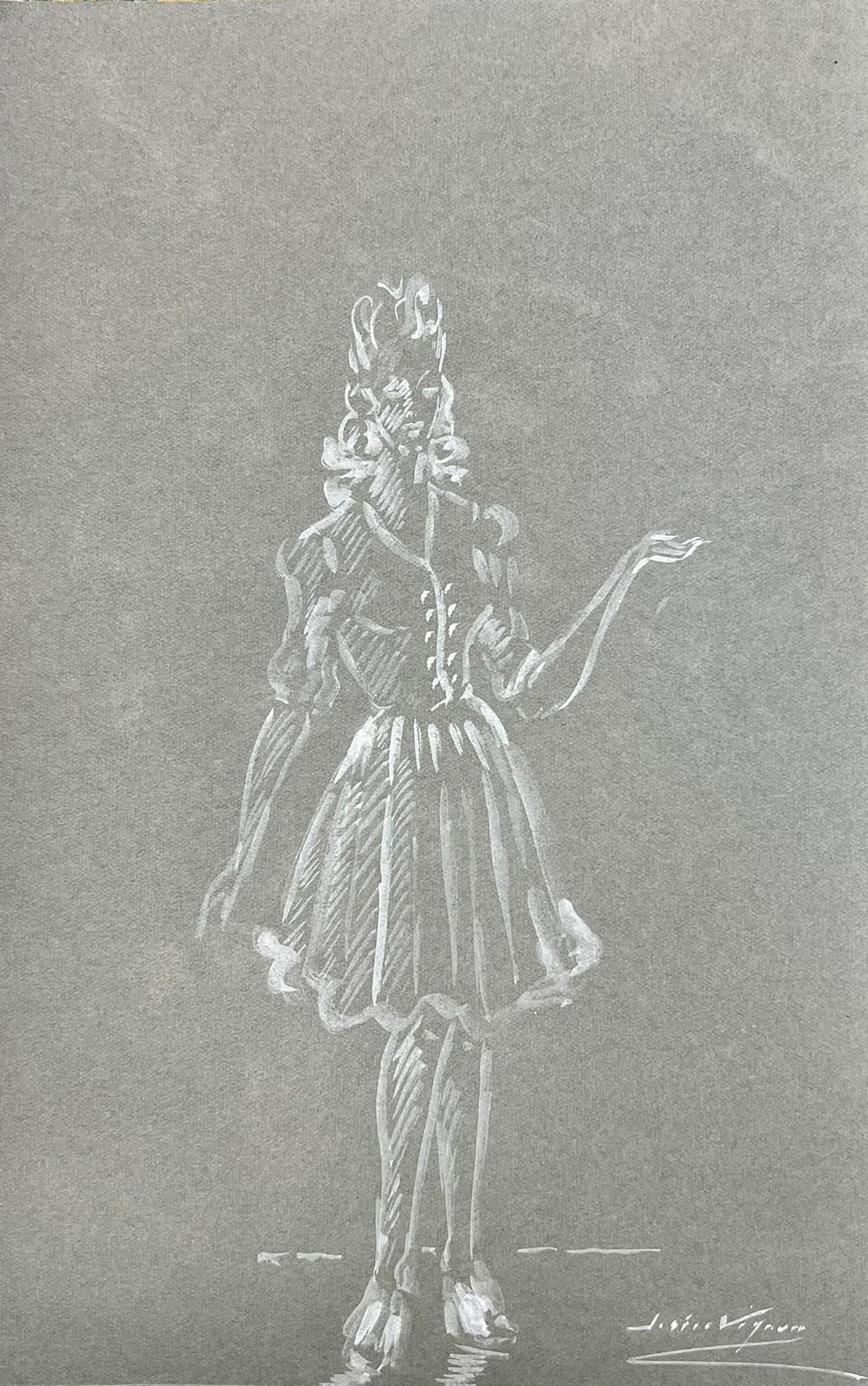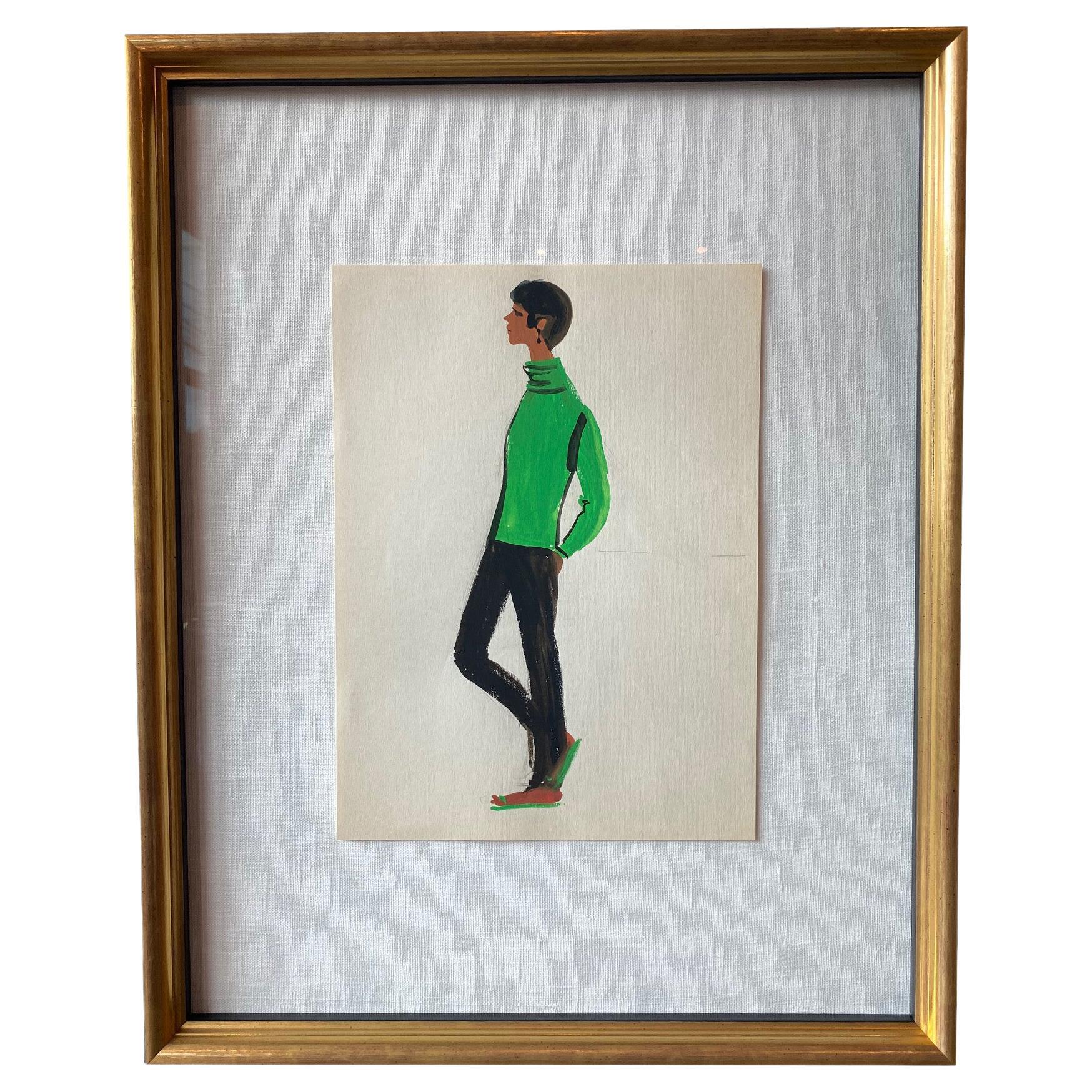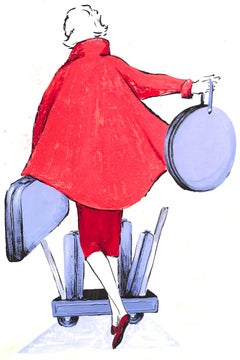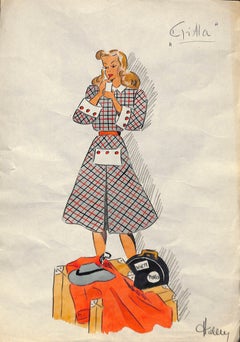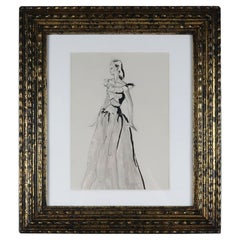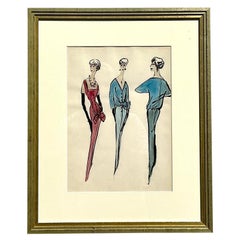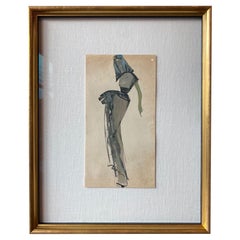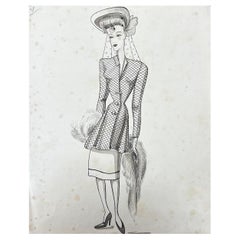Items Similar to Chic Fashion Model circa 1950s Pen & Ink Fashion Sketch
Want more images or videos?
Request additional images or videos from the seller
1 of 3
N/AChic Fashion Model circa 1950s Pen & Ink Fashion Sketch1950-1959
1950-1959
$450
£334.10
€389.32
CA$624.75
A$698.82
CHF 363.67
MX$8,602.67
NOK 4,626.62
SEK 4,340.68
DKK 2,904.71
Shipping
Retrieving quote...The 1stDibs Promise:
Authenticity Guarantee,
Money-Back Guarantee,
24-Hour Cancellation
About the Item
Pen & ink c1950s fashion sketch in a gilt bamboo frame
Art Sz: 8"H x 4 1/2"W
Frame Sz: 11 3/4"H x 7 3/4"W
About the Seller
4.8
Vetted Professional Seller
Every seller passes strict standards for authenticity and reliability
Established in 2000
1stDibs seller since 2019
122 sales on 1stDibs
Typical response time: 4 hours
- ShippingRetrieving quote...Shipping from: Bristol, CT
- Return Policy
Authenticity Guarantee
In the unlikely event there’s an issue with an item’s authenticity, contact us within 1 year for a full refund. DetailsMoney-Back Guarantee
If your item is not as described, is damaged in transit, or does not arrive, contact us within 7 days for a full refund. Details24-Hour Cancellation
You have a 24-hour grace period in which to reconsider your purchase, with no questions asked.Vetted Professional Sellers
Our world-class sellers must adhere to strict standards for service and quality, maintaining the integrity of our listings.Price-Match Guarantee
If you find that a seller listed the same item for a lower price elsewhere, we’ll match it.Trusted Global Delivery
Our best-in-class carrier network provides specialized shipping options worldwide, including custom delivery.More From This Seller
View All"Lady At Turf Race" Original Pen & Ink Drawing by "Peb" (b.1926-)
Located in Bristol, CT
Original pen & ink on paper signed "Peb" aka Pierre Bellocq (b 1926-) LR & dated June 1, 1955 depicting a fashionable Parisien lady at Longchamp
Art Sz...
Category
1950s Drawings and Watercolor Paintings
Materials
Ink, Pen
"Lanvin Paris Chic Lady Traveller c1950s Advertising Artwork"
By Alexander Warren Montel
Located in Bristol, CT
Art Sz: 23"H x 14 1/2"W
Category
1950s Drawings and Watercolor Paintings
Materials
Watercolor
Lanvin of Paris c1920s Fashion Model Original Watercolour
Located in Bristol, CT
Art Sz: 9"H x 6'W
Frame Sz: 18"H x 14 1/2"W
w/ silver gilt frame
Watercolour
Category
1920s Figurative Drawings and Watercolors
Materials
Watercolor
"Lady Traveller Original c1940s Fashion Watercolor Illustration"
Located in Bristol, CT
Sz: 11 5/8" x 8 1/4"
Pencil signed (lower right): Hielley
Category
20th Century Drawings and Watercolor Paintings
Materials
Watercolor
Lanvin of Paris c1920s Fashion Model Original Watercolour
Located in Bristol, CT
Image: 9"H x 6"W
Frame: 18"H x 14.5"W in silver gilt frame
Original circa 1920s Watercolour
Category
1920s Figurative Drawings and Watercolors
Materials
Watercolor
Lanvin of Paris c1920s Fashion Model Original Watercolour
Located in Bristol, CT
Art Sz: 9"H x 6'W
Frame Sz: 18"H x 14 1/2"W
w/ silver gilt frame
Watercolour
Category
1920s Figurative Drawings and Watercolors
Materials
Watercolor
You May Also Like
Original Fashion Drawing, Pat Kerr, 1946
By Pat Kerr
Located in St Annes, Lancashire
Wonderful ink and wash by Pat Kerr, 1946. So evocative of the 1940s.
On card. Unsigned.
Presented in an antique water gilded frame
Drawn for A & C Kay, New Bond St. London.
...
Category
Vintage 1940s English Mid-Century Modern Drawings
Materials
Paper
$520 Sale Price
45% Off
Vintage Regency Original Jacques Fath Fashion Sketch From Jane Bergdorf Goodman
Located in West Palm Beach, FL
Capture the timeless elegance of haute couture with this original fashion sketch attributed to Jacques Fath, circa 1950. Rendered in delicate watercolor, this striking illustration f...
Category
Mid-20th Century French Mid-Century Modern Drawings
Materials
Glass, Giltwood, Paper
$1,160 Sale Price
20% Off
Fashion Sketch by Ginette Roger, France, 1940's
Located in Austin, TX
Gouache on paper fashion sketch by Ginette Roger, in new custom gilt frame. France, 1940's
Category
Vintage 1940s French Mid-Century Modern Paintings
Materials
Paper
1940's Fashion Illustration, Chic Lady
Located in Cirencester, GB
Very stylish, unique and original 1940's fashion design by French illustrator Geneviève Thomas.
The painting, executed in gouache and pencil.
The sketch is original, vintage an...
Category
Mid-20th Century Paintings
Materials
Other
1950’s Fashion Illustration Original Drawing Of A Posed Lady In White
By Josine Vignon
Located in Cirencester, Gloucestershire
Chic Lady
by Josine Vignon (French 1922-2022)
ink/watercolour/pencil drawing on thick grey paper, unframed
signed
paper: 10 x 6.25 inches
double sided
very ...
Category
Mid-20th Century Post-Impressionist Figurative Paintings
Materials
Watercolor, Ink, Color Pencil
Fashion Sketch by Ginette Roger, France, 1940's
Located in Austin, TX
Gouache on paper fashion sketch by Ginette Roger, in new custom gilt frame. France, 1940's
Category
Vintage 1940s French Mid-Century Modern Paintings
Materials
Paper
